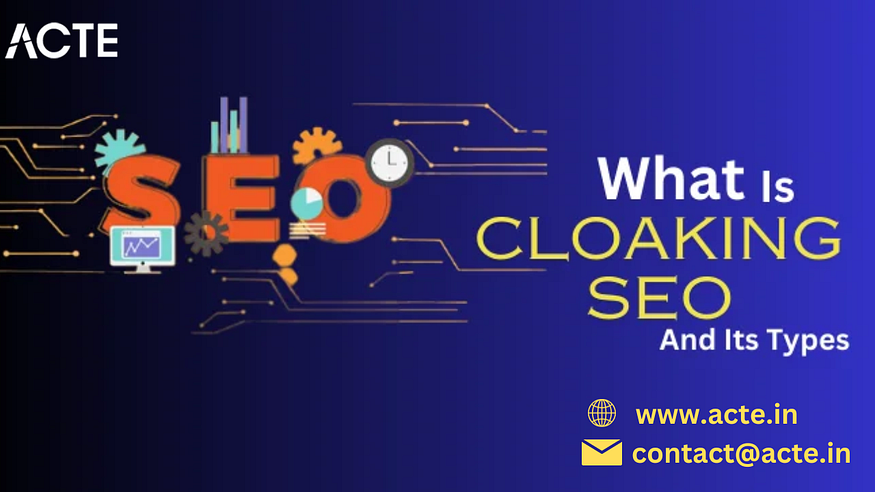Understanding Cloaking in SEO: Types and Implications
In the world of search engine optimization (SEO), various techniques are employed to boost a website’s visibility and rankings. However, not all techniques are ethical or beneficial for long-term success. One such technique is cloaking, which involves presenting different content to search engines and users.
It’s time to enroll yourself in the Best Digital Marketing institute in Bangalore.
Cloaking is a deceptive practice wherein a website shows different content or URLs to search engines compared to what users see. It aims to manipulate search engine rankings by tricking search engine algorithms into perceiving the site as more relevant or valuable than it actually is.

We’ll delve into the concept of cloaking and explore its different types.
While the intent may be to achieve higher rankings, cloaking is considered a black hat SEO technique and is strictly against search engine guidelines.
Types of Cloaking:
IP-based cloaking: This type of cloaking relies on identifying the IP address of the visitor. The website server determines whether the request is coming from a search engine crawler or a regular user based on the IP address. Different content is then presented accordingly.
User-agent cloaking: User-agent cloaking involves detecting the user-agent string sent by the visitor’s browser. Since search engine crawlers have specific user-agent strings, the server can distinguish them from regular users. Unique content is displayed to search engines, while users see a different version.
JavaScript cloaking: JavaScript cloaking takes advantage of the fact that search engine crawlers may not execute JavaScript fully. By delivering content via JavaScript, websites can display different information to search engines and users. This can be a way to hide manipulative tactics from search engines.
Flash or image-based cloaking: This type of cloaking uses Flash or images to present content that search engines cannot read. Textual information embedded within these elements remains invisible to search engine crawlers, enabling websites to display different content to search engines and users.

Here’s a brief insight into the various Digital Marketing Course available in Bangalore.
Implications of Cloaking:
Engaging in cloaking can have severe consequences for a website’s SEO and online presence. Search engines, such as Google, actively combat cloaking and employ advanced algorithms to detect and penalize websites utilizing these tactics. Penalties can range from a significant drop in rankings to complete removal from search engine results.
It’s crucial to prioritize ethical SEO practices that focus on providing valuable and relevant content to both search engines and users. By doing so, websites can build a strong foundation for long-term success and avoid the risks associated with black hat techniques like cloaking.
Cloaking in SEO involves presenting different content to search engines and users, aiming to deceive search engine algorithms. However, search engines consider cloaking a violation of their guidelines and penalize websites employing such tactics.
It’s essential to adhere to ethical SEO practices that prioritize valuable content and user experience. By doing so, websites can establish a solid SEO strategy and enhance their visibility in a sustainable and legitimate manner.

Comments
Post a Comment